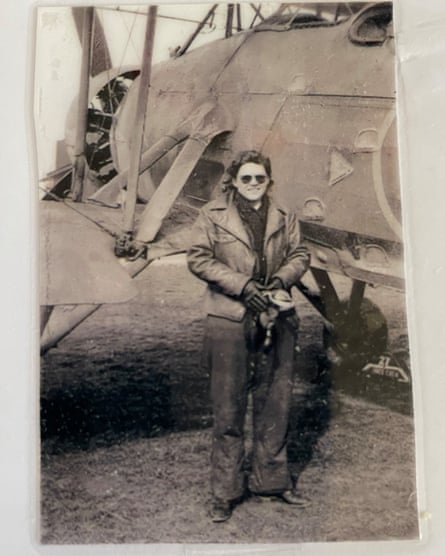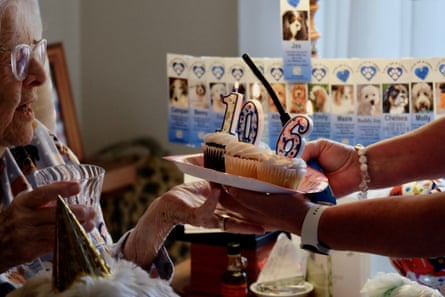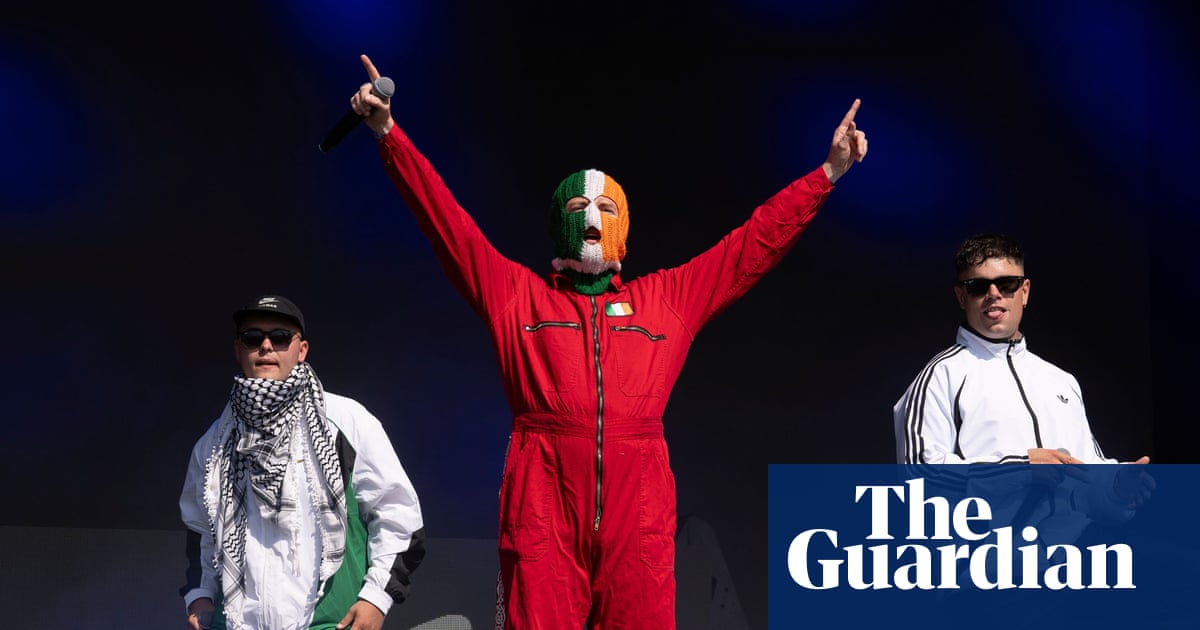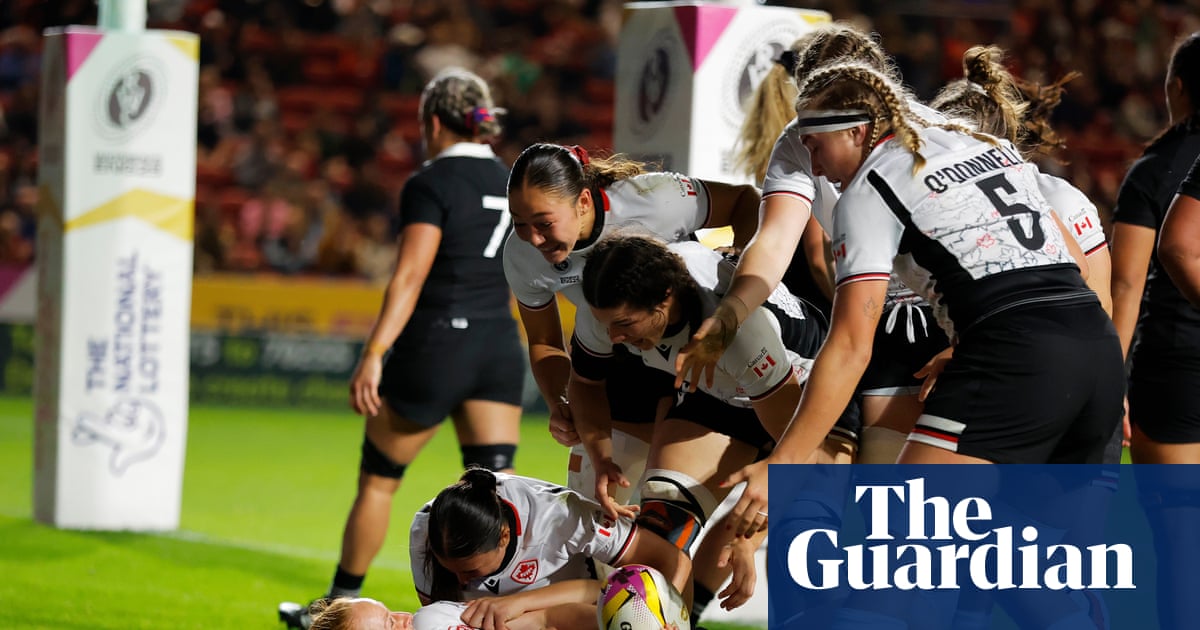Nancy Miller Stratford sat alone behind the controls of a Spitfire fighter plane, charting an uncertain course through an impenetrable clot of dark clouds.
On the horizon, the young pilot could see a promising patch of daylight, “like the devil waving his hand to come on through”. But just as suddenly as the sky opened up, the clouds closed in again.
Her visibility plummeted to zero. She had no idea which way was up and which was down. Far beneath her lay the moody Scottish coastline, where an unplanned landing would be next to impossible.
Fortunately, it was life-or-death scenarios like these when Stratford was the sharpest. In that moment, she felt no fear – this was simply a problem that needed to be solved. Despite having no formal instrument training, she relied solely on the control panel in the cockpit, rather than the view outside her window, to muscle the plane through the wall of clouds and land safely at the nearest airport.
The year was 1944. Stratford was 25 years old.
Last week, Stratford celebrated her 106th birthday at home in California. After eight decades, she and a small group of other female pilots are finally earning more widespread recognition for the critical – and dangerous – roles they played in the second world war. A new book called Spitfires, written by the journalist and author Becky Aikman, chronicles the pilots’ vivid wartime stories as the first American women to fly military aircraft.

At the time, women like Stratford were banned from serving in combat roles for the US. So they joined the Air Transport Auxiliary instead: a British civilian group that ferried barely tested bombers and fighter planes to airbases, and then returned damaged wrecks for repair. Because the women often had to contend with shoddy equipment and bad weather, the job was hazardous and unpredictable; one in seven transport pilots died in crashes over the course of the war.
But the role also came with an unprecedented sense of freedom and global importance for female pilots; Stratford once even delivered a Spitfire to a Polish squadron only a few days before they fought in D-Day.
Today, Stratford is the last surviving pilot of the heroic transport group.
Her condo in a picturesque retirement community in Carlsbad, a city on the Pacific coast near San Diego, is filled with mementoes from the war and her long flying career: miniature model airplanes (she has flown 103 different types of aircraft), black-and-photo photos of her in uniform, and even a prized leather flying helmet (used as protection against the elements and deafening engine noise in the early days of aviation).
And last Thursday, that small condo was packed with dozens of other retirees and staff who had come to wish her happy birthday.
At 106, and with such a formidable background, Stratford has become a quasi-celebrity within the retirement community. Friends and family brought her cupcakes and champagne, and a local pet therapy group ushered in a parade of dogs for Stratford to pet. Though she lost her hearing many decades ago from the constant roar of plane engines, visitors wrote down their birthday messages to her on a whiteboard. To mark the occasion, Stratford wore her best pair of dog-themed pyjamas.
The fact that the former pilot has lived longer than most people she knew in her early life is something of a mystery, even to her.
“I’m kind of surprised,” she said, before adding: “But then I am old.”
For Stratford, the secret to longevity depends on the day. Sometimes, her answer to that question is “not drinking too much”.
But in a cheekier moment, she told a friend recently: the real key is “chocolate and vodka tonics”.

‘Women have proved themselves’
Stratford and the other female aviators she flew with during the war – a diverse group nicknamed the “Attagirls” – now have a defined place in history books. But in the 1940s, Stratford wasn’t thinking about any broader, lofty ideals about the advancement of women in aviation.
“I just wanted to fly,” she said frankly, reminiscing one sunny afternoon before her birthday. From a comfortable chair in the living room, she had the best view of her model airplanes that sat atop the TV like a crown.
“In other words,” she said, “it wasn’t exactly the thing to do then, so therefore you have to be pretty positive about what you wanted to do.”
Stratford was born in Los Angeles in 1919, just after the end of the first world war. At 16 years old, she rode in a plane for the first time as a birthday present. That first flight, she wrote in a self-published memoir in 2010, was fairly boring – until the pilot struggled with the landing. Feeling the plane’s sudden steep descent, Stratford let out “a whoop of joy”, while her brother froze in terror next to her.
Stratford later chased that feeling as a member of the Air Transport Auxiliary. A few years after her first plane ride, she happened to read about civilian pilot training while she was in college. Her father wasn’t happy about it, but he signed a release form for her to take lessons. Later, when Stratford was ready to join the transport unit, her then-fiance forbade her from going. She ended the relationship and went anyway.
Though Stratford had a bit more freedom to fly in the UK, female pilots back in the US dealt not only with discrimination, but intentional sabotage that resulted in death. Male pilots would sometimes stuff rags or sugar in the gas tank of a woman’s plane to make them crash, or even slash their tires, as Aikman reported in Spitfires. At least one pilot died after someone added sugar to her plane’s gas tank.
Even after Stratford’s time serving in the war, Aikman wrote, “the aviation industry did not open the gates for her” when she returned home. So she took one of the only jobs she could get: flying crop-dusting planes in Oregon.
But eventually, Stratford broke barriers again, becoming the second woman in the United States to earn her commercial helicopter license. She got married and moved with her husband to Alaska, where they ran a helicopter business together, transporting adventurers to high peaks and construction workers to the Trans-Alaska pipeline.

Between then and now, Stratford said it was remarkable to see how far women have come in aviation – although the world has been slow to accept their successes. In the US, major commercial airlines didn’t start hiring female pilots until the 1970s, and women were banned from flying in combat roles until the early 1990s: roughly 50 years after Stratford played her part in the second world war.
“Women proved that they could do things, and so the men had to let them in,” Stratford said. “I think women have proved themselves in aviation, and they’re flying airlines and everything now.”
Still, in 2025, women continue to face major obstacles. While the number of women earning their pilot licenses has increased dramatically in recent years, women make up only about 5% of pilots flying with airlines in the UK and the US.
Stratford’s advice to female aviators today is simple: “Keep at it, keep at it, keep at it.”
All told, flying has remained one of the most important parts of her life. As she wrote in her memoir: “I loved all the flying, the freedom, doing what I liked to do. It was wild and woolly at times. I was a lucky person in my career. I smile. I have absolutely no regrets.”
A decade later, her thoughts on the subject haven’t changed.
“I was glad that I could help out,” she said matter-of-factly. “I think my mother thought I should get married or something, but I didn’t feel that way.”

 2 months ago
66
2 months ago
66

















































